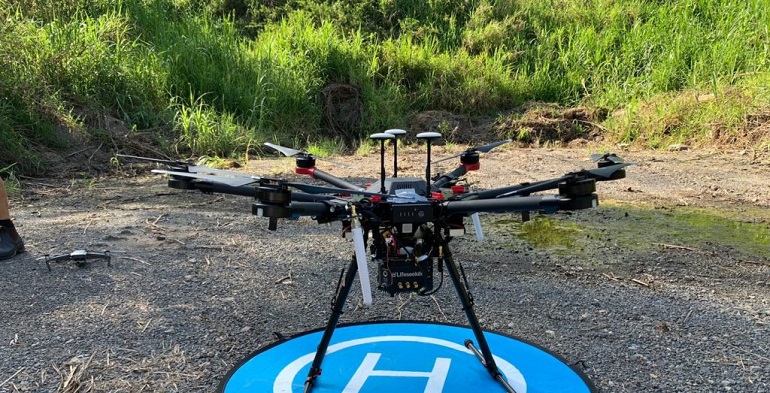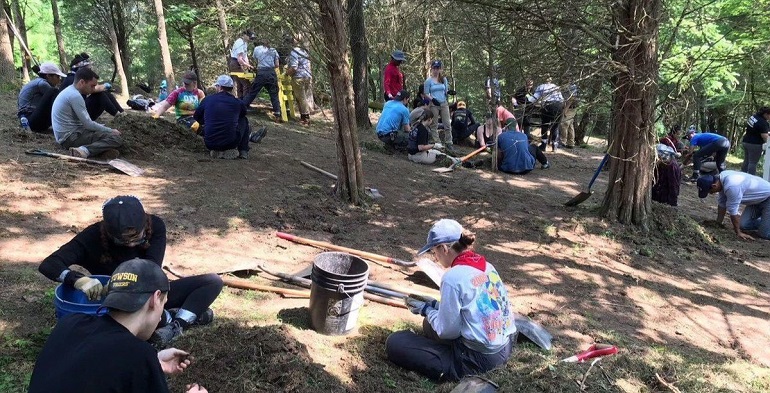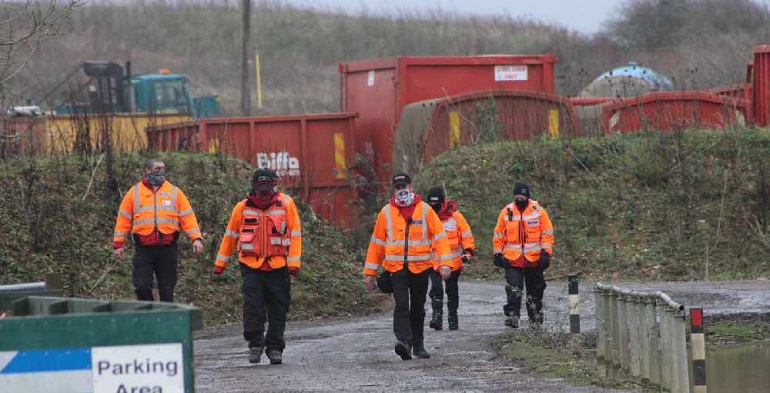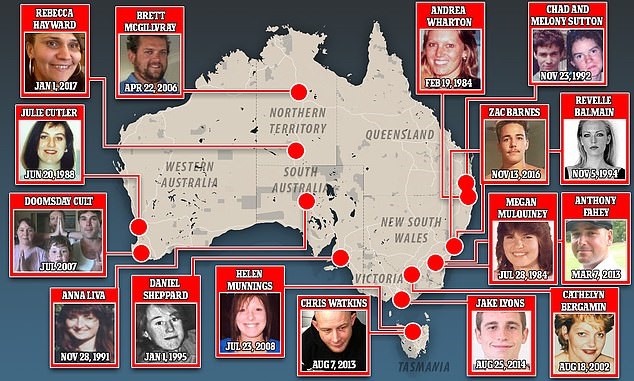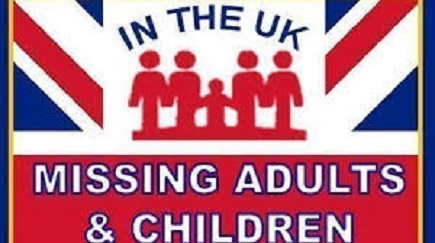Missing
Jillian Dee Cutshall




Jillian, approximately 1987; Age when reported missing: 34 (approximately 2012)
Date and time person was reported missing : 08/13/1987
Missing location (approx) :
Norfolk, Nebraska
Missing classification : Non-Family Abduction
Gender : Female
Ethnicity :
White
DOB : 02/19/1978 (43)
Age at the time of disappearance: 9 years old
Height / Weight : 4'6, 65 pounds
Description, clothing, jewerly and more : A purple shirt, blue jeans and white Nike sneakers.
Distinguishing characteristics, birthmarks, tattoos
: Caucasian female. Blonde hair, blue eyes. Jillian's teeth are crooked. She has a two-inch vertical scar on the crown of her head and a horizontal scar on her right upper lip. Her nickname is Jill.
Information on the case from local sources, may or may not be correct : Jillian was last seen at approximately 6:30 a.m. on August 13, 1987 in Norfolk, Nebraska. Her parents are divorced and she lived in Grand Bend, Kansas with her mother, Joyce Cutshall, and her brother.
She was visiting her stepmother and her father, Roger Cutshall, in Norfolk when she disappeared. They lived in McNeely Apartments. She didn't like to stay in their apartment alone, so when they left for work early that morning, she started walking to her babysitter's residence four blocks away.
Jillian never arrived and has not been seen again. Her babysitter assumed she'd decided to stay home, and she wasn't missed until after 3:00 p.m., when her stepmother went to the babysitter's home to pick her up and found out she wasn't there.
Three months after her disappearance, her clothes, shoes and keys were found in the Wood Duck Wildlife Refuge in Stanton, Nebraska, ten miles from her father's home.
In 1988, a tip led Joyce to David C. Phelps, a man who lived in Roger's apartment building and had met Jillian. Police interviewed him twice in the spring of 1988.
In the second interview, he told a detective he had been molesting children since he was in his teens and preferred blonde girls between the Age at the time of disappearance: s of four and six. He described six incidents of Gender : ual contact with girls. Charges were never filed in connection with any of the alleged assaults.
Phelps stated he liked Jillian's blue eyes, but that she was "too old" for his liking.
In January 1989, a private investigator hired by Joyce drove Phelps to the wildlife refuge where Jillian's clothes were found. Later that day, Phelps gave a statement to a television crew the investigator had waiting and stated that he and another neighbor, Kermit Baumgartner, who had a record for Gender : ual assault, took Jillian to the refuge.
Phelps described the child's clothes and undergarments correctly and said he held her down while Baumgartner molested her. He stated he became nervous and left Baumgartner and Jillian alone in the refuge and drove back home, and he never saw the child again.
Baumgartner denied having had anything to do with Jillian's disappearance and he has never been charged in connection with it. When police interviewed Phelps, he recanted his previous statements, stating they were coerced by the private investigator.
He was released without charge, as authorities didn't think they had enough evidence. Both men left the state shortly afterwards; Baumgartner went to California and Phelps to Iowa.
Joyce started a petition drive that forced a grand jury to convene and open an investigation. The grand jury indicted Phelps for abduction with intent to commit Gender : ual assault. He was convicted in the spring of 1991 and sentenced to life in prison without the possibility of parole.
No one has been charged with causing Jillian's death, although she was declared legally dead after Phelps's conviction. She has never been located.
Other information and links : ncy
Norfolk Police Department
402-644-8700
September 2021 updates and sources
Missing Children�s Statistics
One Missing Child Is One Too Many
The lack of a common definition of �missing child,� and a common response to the issue, results in few reliable statistics on the scope of the problem around the world.
Even with this challenge, we know that:
In Australia, an estimated 20,000 children are reported missing every year.
Australian Federal Police, National Coordination Centre.
In Canada, an estimated 45,288 children are reported missing each year.
Government of Canada, Canada�s Missing � 2015 Fast Fact Sheet.
In Germany, an estimated 100,000 children are reported missing each year.
Initiative Vermisste Kinder.
In India, an estimated 96,000 children go missing each year.
Bachpan Bachao Andolan, Missing Children of India.
In Jamaica, an estimated 1,984 children were reporting missing in 2015.
Jamaica�s Office of Children�s Registry
In Russia, an estimated 45,000 children were reported missing in 2015.
Interview with Pavel Astakhov MIA �Russia Today�, Apr. 4, 2016.
In Spain, an estimated 20,000 children are reported missing every year.
Spain Joins EU Hotline for Missing Children, Sep. 22, 2010.
In the United Kingdom, an estimated 112,853 children are reported missing every year.
National Crime Agency, UK Missing Persons Bureau.
In the United States, an estimated 460,000 children are reported missing every year.
Federal Bureau of Investigation, Missing Children�s Statistics
One Missing Child Is One Too Many
The lack of a common definition of �missing child,� and a common response to the issue, results in few reliable statistics on the scope of the problem around the world.
Even with this challenge, we know that:
In Australia, an estimated 20,000 children are reported missing every year.
Australian Federal Police, National Coordination Centre.
In Canada, an estimated 45,288 children are reported missing each year.
Government of Canada, Canada�s Missing � 2015 Fast Fact Sheet.
In Germany, an estimated 100,000 children are reported missing each year.
Initiative Vermisste Kinder.
In India, an estimated 96,000 children go missing each year.
Bachpan Bachao Andolan, Missing Children of India.
In Jamaica, an estimated 1,984 children were reporting missing in 2015.
Jamaica�s Office of Children�s Registry
In Russia, an estimated 45,000 children were reported missing in 2015.
Interview with Pavel Astakhov MIA �Russia Today�, Apr. 4, 2016.
In Spain, an estimated 20,000 children are reported missing every year.
Spain Joins EU Hotline for Missing Children, Sep. 22, 2010.
In the United Kingdom, an estimated 112,853 children are reported missing every year.
National Crime Agency, UK Missing Persons Bureau.
In the United States, an estimated 460,000 children are reported missing every year.
Federal Bureau of Investigation, NCIC.
This, however, is only a snapshot of the problem. In many countries, statistics on missing children are not even available; and, unfortunately, even available statistics may be inaccurate due to: under-reporting/under-recognition; inflation; incorrect database entry of case information; and deletion of records once a case is closed.
The lack of numbers, and the discrepancy in the numbers that do exist, is one of the key reasons why ICMEC developed and advocates for the Model Missing Child Framework, which assists countries with building strong, well-rounded national responses, and facilitates more efficient investigations, management, and resolution of missing children cases.
We firmly believe that one missing child is one too many, and we are committed to improving the global understanding of and response to missing and abducted children.
Here is a look at missing children in the United States. There are several different types of missing children: runaways, family abductions, lost or �thrown away� and non-family abductions. Advances in technology, communications through public alerts and greater cooperation from law enforcement have facilitated the recovery process.
Statistics
According to the FBI�s National Crime Information Center (NCIC) Missing Person File, there are 89,637 active missing person records, of which juveniles under the age of 18 account for 30,396 (34%) of the records. (as of December 31, 2020)
AMBER Alert
�AMBER (America�s Missing: Broadcast Emergency Response) Alerts are emergency messages broadcast when a law enforcement agency determines that a child has been abducted and is in imminent danger. The broadcasts include information about the child and the abductor, including physical descriptions as well as information about the abductor�s vehicle - which could lead to the child�s recovery.�
The AMBER Alert system began in 1996 and was named in honor of Amber Hagerman, a 9-year-old who was abducted in Arlington, Texas, and murdered.
All 50 states, the District of Columbia, Puerto Rico, and the US Virgin Islands have AMBER Alert plans in place to help find missing children in danger.
As of December 2020, the AMBER Alert program has been credited with the safe recovery of 1029 children..
This, however, is only a snapshot of the problem. In many countries, statistics on missing children are not even available; and, unfortunately, even available statistics may be inaccurate due to: under-reporting/under-recognition; inflation; incorrect database entry of case information; and deletion of records once a case is closed.
The lack of numbers, and the discrepancy in the numbers that do exist, is one of the key reasons why ICMEC developed and advocates for the Model Missing Child Framework, which assists countries with building strong, well-rounded national responses, and facilitates more efficient investigations, management, and resolution of missing children cases.
We firmly believe that one missing child is one too many, and we are committed to improving the global understanding of and response to missing and abducted children.
Here is a look at missing children in the United States. There are several different types of missing children: runaways, family abductions, lost or �thrown away� and non-family abductions. Advances in technology, communications through public alerts and greater cooperation from law enforcement have facilitated the recovery process.
Statistics
According to the FBI�s National Crime Information Center (Missing Children�s Statistics
One Missing Child Is One Too Many
The lack of a common definition of �missing child,� and a common response to the issue, results in few reliable statistics on the scope of the problem around the world.
Even with this challenge, we know that:
In Australia, an estimated 20,000 children are reported missing every year.
Australian Federal Police, National Coordination Centre.
In Canada, an estimated 45,288 children are reported missing each year.
Government of Canada, Canada�s Missing � 2015 Fast Fact Sheet.
In Germany, an estimated 100,000 children are reported missing each year.
Initiative Vermisste Kinder.
In India, an estimated 96,000 children go missing each year.
Bachpan Bachao Andolan, Missing Children of India.
In Jamaica, an estimated 1,984 children were reporting missing in 2015.
Jamaica�s Office of Children�s Registry
In Russia, an estimated 45,000 children were reported missing in 2015.
Interview with Pavel Astakhov MIA �Russia Today�, Apr. 4, 2016.
In Spain, an estimated 20,000 children are reported missing every year.
Spain Joins EU Hotline for Missing Children, Sep. 22, 2010.
In the United Kingdom, an estimated 112,853 children are reported missing every year.
National Crime Agency, UK Missing Persons Bureau.
In the United States, an estimated 460,000 children are reported missing every year.
Federal Bureau of Investigation, NCIC.
This, however, is only a snapshot of the problem. In many countries, statistics on missing children are not even available; and, unfortunately, even available statistics may be inaccurate due to: under-reporting/under-recognition; inflation; incorrect database entry of case information; and deletion of records once a case is closed.
The lack of numbers, and the discrepancy in the numbers that do exist, is one of the key reasons why ICMEC developed and advocates for the Model Missing Child Framework, which assists countries with building strong, well-rounded national responses, and facilitates more efficient investigations, management, and resolution of missing children cases.
We firmly believe that one missing child is one too many, and we are committed to improving the global understanding of and response to missing and abducted children.
Here is a look at missing children in the United States. There are several different types of missing children: runaways, family abductions, lost or �thrown away� and non-family abductions. Advances in technology, communications through public alerts and greater cooperation from law enforcement have facilitated the recovery process.
Statistics
According to the FBI�s National Crime Information Center (NCIC) Missing Person File, there are 89,637 active missing person records, of which juveniles under the age of 18 account for 30,396 (34%) of the records. (as of December 31, 2020)
AMBER Alert
�AMBER (America�s Missing: Broadcast Emergency Response) Alerts are emergency messages broadcast when a law enforcement agency determines that a child has been abducted and is in imminent danger. The broadcasts include information about the child and the abductor, including physical descriptions as well as information about the abductor�s vehicle - which could lead to the child�s recovery.�
The AMBER Alert system began in 1996 and was named in honor of Amber Hagerman, a 9-year-old who was abducted in Arlington, Texas, and murdered.
All 50 states, the District of Columbia, Puerto Rico, and the US Virgin Islands have AMBER Alert plans in place to help find missing children in danger.
As of December 2020, the AMBER Alert program has been credited with the safe recovery of 1029 children.) Missing Person File, there are 89,637 active missing person records, of which juveniles under the age of 18 account for 30,396 (34%) of the records. (as of December 31, 2020)
AMBER Alert
�AMBER (America�s Missing: Broadcast Emergency Response) Alerts are emergency messages broadcast when a law enforcement agency determines that a child has been abducted and is in imminent danger. The broadcasts include information about the child and the abductor, including physical descriptions as well as information about the abductor�s vehicle - which could lead to the child�s recovery.�
The AMBER Alert system began in 1996 and was named in honor of Amber Hagerman, a 9-year-old who was abducted in Arlington, Texas, and murdered.
All 50 states, the District of Columbia, Puerto Rico, and the US Virgin Islands have AMBER Alert plans in place to help find missing children in danger.
As of December 2020, the AMBER Alert program has been credited with the safe recovery of 1029 children.
Child Protection Education of America
Interactive Missing Person Search Map



